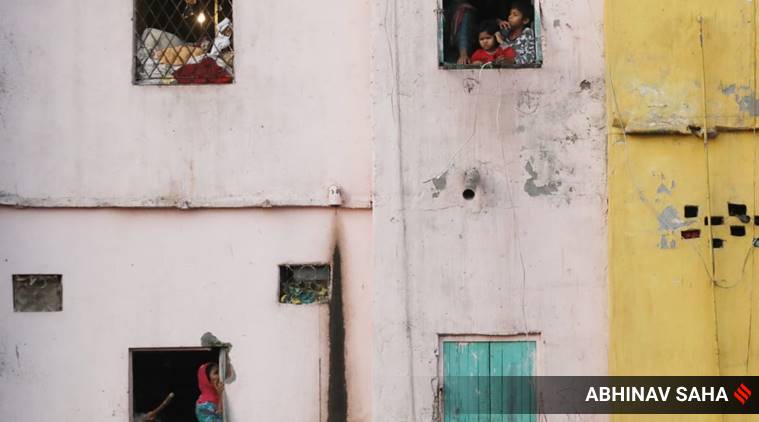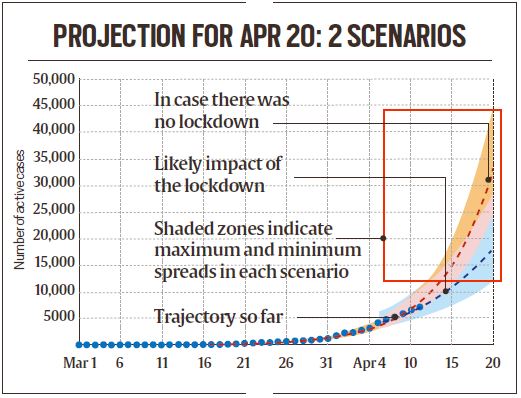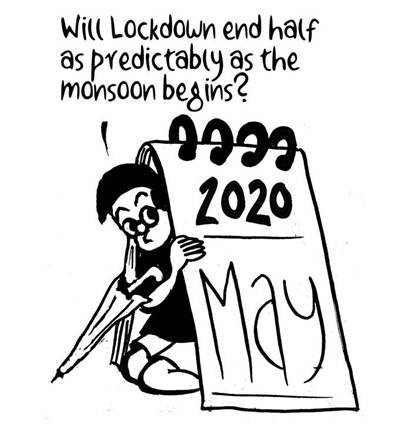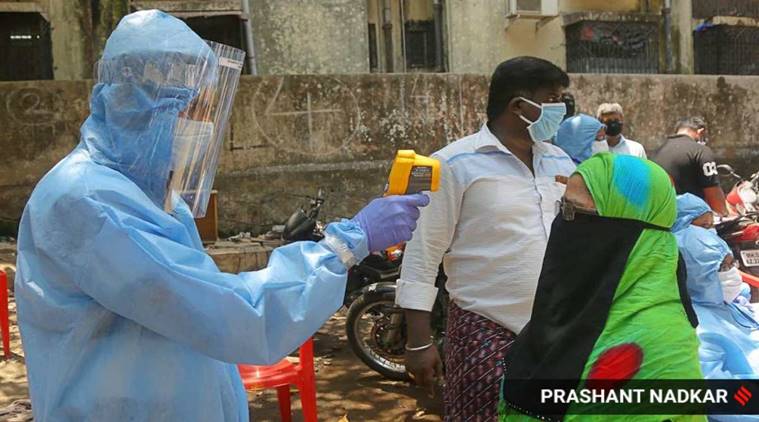- India
- International
Over the last week, slight but ‘noticeable’ flattening of growth curve in coronavirus cases
Coronavirus (COVID-19): Scientists have observed a slight, but “noticeable”, flattening of the growth curve starting April 6, an indication that the reduced contact between people as a result of the lockdown could be showing its desired effect.
 Residents at their window at Nizamuddin Basti, New Delhi, during the Lockdown across the country
Residents at their window at Nizamuddin Basti, New Delhi, during the Lockdown across the country
Coronavirus (COVID-19): Just as India prepares to extend its 21-day lockdown period by two more weeks, the first indications have emerged that this measure could indeed be helping in slowing down the spread of COVID-19 disease in the country.
Scientists have observed a slight, but “noticeable”, flattening of the growth curve starting April 6, an indication that the reduced contact between people as a result of the lockdown could be showing its desired effect.
If the trend continues, it could result in a significantly lower number of infections in the coming days, an analysis of disease data by Soumya Easwaran and Sitabhra Sinha at Chennai’s Institute of Mathematical Sciences shows. Sinha told The Indian Express his projections show that by April 20, less than 20,000 people would be infected by the disease. In the absence of any impact of the lockdown, this number could have been around 35,000.
Follow LIVE updates on coronavirus pandemic
India had close to 8,400 positive cases on April 11, almost exactly double of what it was on April 5.
Sinha said as a result of this slowdown in the spread, the reproduction number for the disease between April 6 and April 11 was significantly lower than that for the entire period of the outbreak in India, starting March 4. Reproduction number refers to the average number of people who get infected by an already-infected person.

READ | Coronavirus outbreak: Almost 1 in 2 districts hit by virus, exit from lockdown to be tricky

According to calculations by Sinha’s team, every infected person is estimated to have passed on the disease to another 1.83 persons on an average since the outbreak began. However, between April 6 and April 11, this number is estimated to be only 1.55.
“It is still too early to say this for sure, but it is possible that this reduction in the growth rate of the disease is the result of the lockdown,” Sinha said, adding these trends were not final and could change.
“The growth curve for Maharashtra appeared to be bending a little (showing signs of a slowdown) around April 6, but now we can see that it was a minor blip. The state with the largest number of cases is still experiencing an exponential growth of cases,” he said.
READ | Start big units at 25% capacity, Industry dept tells Home Ministry
On the other hand, Telangana with about 970 cases on April 11, was still showing a linear growth in cases, possibly because its expansion was based mainly on a very wide base comprising a large number of people who had attended the Tablighi Jamaat event in Delhi last month.
The estimated slowdown could come as a justification for the government to extend the lockdown in a bid to further reduce the growth of the spread. The slowdown does not mean the beginning of the end of the disease in India. It does not even mean that the number of people testing positive for the virus would begin to fall immediately. All that the slowdown implies is the rate at which the virus was spreading would slow down.
READ | New cases increasingly in single digits, how Kerala managed to buck the national trend
Besides the reproduction number, there is another indicator that seems to be providing some comfort to the scientists. The positivity rate — or the proportion of people testing positive against the total number of tests being conducted — has remained more or less static despite an increase in the number of tests.
Since April 3, which had seen an abnormal spike in the positivity rate possibly as a fallout of the Tablighi Jamaat event, this number has continued to hover around 4 per cent, meaning two in every 50 tests is positive.

“Positivity rate can give you a sense of how widespread the disease is, assuming that a substantial number of people are being tested. We’ve now reached roughly 16,000 to 17,000 tests per day, which is pretty good. But we need to see where it stabilises on an average. If we are testing more and the positivity rate remains the same, it’s a clue that the infection is where it was, and is not expanding per se. If you see that it suddenly goes up, that’s something that could be worrisome,” said Tarun Bhatnagar, a scientist at ICMR and National Institute of Epidemiology, Chennai.
Read | Social distancing in Dharavi: 8.5 lakh people holed up in 2.4 sq km
Just like it is with the reproduction number, scientists warn against reading too much into the positivity rate as well, sensitive as it is to the number of tests being conducted. “This (positivity rate) is an indicator of an increase in disease spread but also focused testing and better contact tracing,” Tavpritesh Sethi, computational biologist at IIIT Delhi, said. “But testing should be ramped up to create another stabilisation,” he said.
On April 9, ICMR had said that the positivity rate in testing over the last one to two months had not changed substantially, between 3 per cent and 5 per cent. An examination from March 18 to April 11 of the positivity rate – or the proportion of positive cases to the number of tests – shows that the rate has fluctuated in the range 1.1 per cent to 4.1 per cent.
April 3 was an exception when the rate was 4.68 per cent. That day, as reported by The Indian Express, the Tablighi Jamaat congregation in Delhi accounted for one-fifth of the COVID-19 positive cases nationwide.
On April 9, ICMR changed its testing strategy to include asymptomatic people who were direct and high-risk contacts of a confirmed case. In hotspots and large migration gatherings, the strategy was expanded even further to all influenza-like, symptomatic people with a fever, cough, sore throat, or runny nose.
READ | Three weeks and counting: Stranded and hungry at shut gateway
 On April 2, ICMR released an interim advisory for using rapid antibody tests for COVID-19 in hotspot areas.
On April 2, ICMR released an interim advisory for using rapid antibody tests for COVID-19 in hotspot areas.
Bhatnagar added that one person may be tested multiple times, skewing the positivity rate. ICMR has released data on tested individuals sporadically.
On April 2, ICMR released an interim advisory for using rapid antibody tests for COVID-19 in hotspot areas. On April 4, they released a final advisory for using these tests on symptomatic, influenza-like illnesses. Rapid antibody tests do not give confirmed results and therefore, are not included in data about positive cases.
Apr 26: Latest News
- 01
- 02
- 03
- 04
- 05







































